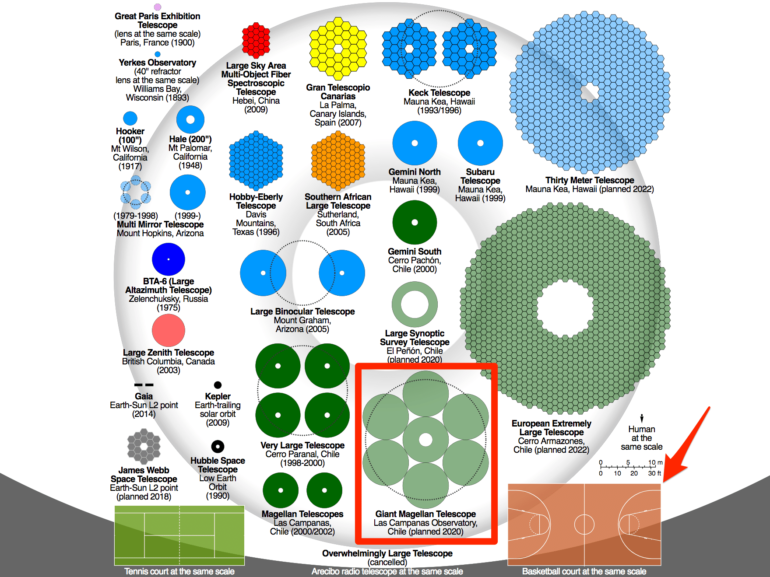Last Updated on 08/21/2018 by Mark Beckenbach
With the Giant Magellan Telescope now officially under construction, looks like we’re on the way to an exciting and mind-blowing future of space imaging and astrophotography.
Attention astrophotography fans and space geeks! The Giant Magellan Telescope (GMT) is finally officially in the works, as construction crews have started the hard rock excavations on its designated site at the Las Camapanas Observatory in Chile. Once finished, the GMT will weigh over 2 million pounds, so the workers are burrowing a 23-foot-deep hole which will be filled with concrete to serve as its foundation. According to a GMT representative, a 1,000 ton steel structure will support the massive telescope, and will be placed in a rotating enclosure measuring 22 stories tall and 56 meters wide.
A Chron report tells us that the massive $1 billion telescope is set to be the largest and most powerful in the world once it sees “first light” as early as 2024. From its perch 2,514 meters (8,248 feet) high up in the Atacama desert, the GMT will be scanning the clear night sky to capture images possibly 10 times sharper than the Hubble Space Telescope.
As for its optics, reports also say that the GMT will be equipped with seven 27-feet-wide mirrors, each weighing almost 20 tons. They will be arranged in a honeycomb shape to form a light-collecting area as big as a basketball court which will produce better resolution than any telescope ever built. But, that’s not all. The telescope will also utilize laser-based “adaptive optics” to determine the amount of distortion caused by the Earth’s atmosphere and adjust accordingly to produce clearer images.

NASA’s Hubble Space Telescope has been churning out mind-blowing images from deep space for almost three decades now, which is an amazing feat for space exploration and astrophotography in itself. We could be less than a decade away from getting more detailed images of distant galaxies, exoplanets, and maybe even signs of alien life; definitely something mind-blowing to look forward to.
Check out the Giant Magellan Telescope website to find out more about this exciting project.
Screenshot image from the video by Giant Magellan Telescope


